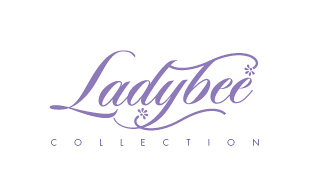Discover the Latest Trends in Boutique Fashion for each Season
Wiki Article
Lasting Fashion: How Eco-Friendly Garments Is Forming the Future of Style
As the fashion business faces boosting scrutiny over its environmental influence, the increase of lasting style uses an encouraging alternative that straightens design with ecological responsibility. Employing ingenious materials such as recycled fibers and plant-based materials, along with sophisticated approaches like digital and 3D printing, designers are redefining what it suggests to be trendy in the modern-day age. Concurrently, the growing popularity of upcycling and thrift culture is fostering a shift towards a round economic situation. Yet, how does this movement genuinely affect the future trajectory of fashion, and what challenges lie ahead in its extensive fostering?Ingenious Lasting Materials
As the garment industry faces its environmental impact, ingenious sustainable materials have actually emerged as a critical remedy for decreasing environmental impacts. Amongst one of the most promising materials are those derived from natural, sustainable sources, such as natural cotton, hemp, and bamboo. These materials not just minimize reliance on fossil gas however additionally minimize unsafe chemical use and water usage. Organic cotton, for instance, uses dramatically much less water than conventional cotton and gets rid of the demand for toxic chemicals, thus maintaining soil health and wellness and biodiversity.Along with plant-based products, improvements in biofabrication have caused the development of lab-grown fabrics. Mycelium leather, derived from mushroom roots, provides a biodegradable and flexible choice to pet natural leather. Its manufacturing results in considerably reduced carbon emissions and water use, making it a much more lasting choice for designer seeking to line up with eco-friendly practices.
Recycled materials are likewise obtaining traction, with polyester made from recycled plastic containers representing a substantial advancement. This development not only diverts plastic waste from landfills and oceans but also reduces power usage compared to generating virgin polyester. Together, these materials highlight the potential for an extra sustainable garment industry, leading the way for eco aware style and manufacturing.
Eco-Conscious Production
Building on the developments in sustainable products, the style industry is likewise re-evaluating its production procedures to additionally lower ecological effect. Trick methods include decreasing water intake, lowering carbon emissions, and eliminating hazardous chemicals.Another crucial element is the reduction of poisonous chemicals traditionally utilized in dyeing and completing textiles. Eco-conscious makers are shifting towards plant-based dyes and waterless dyeing innovations, which not just secure neighborhood ecosystems however also boost employee safety. Developments like digital printing lower textile waste and power intake, supplying a cleaner choice to typical approaches.
With the improvement of blockchain modern technology, companies can now give thorough insights into their supply chains, guaranteeing ethical and environmentally pleasant techniques at each action. As the need for eco-conscious items grows, manufacturers are compelled to innovate, guaranteeing that the future of style is both sustainable and stylish.
The Increase of Upcycling
Upcycling, a transformative practice in lasting fashion, entails creatively repurposing discarded materials into new, premium products. This cutting-edge approach not just reduces waste yet also lessens the need for resources, therefore minimizing the ecological influence of apparel manufacturing. By reimagining and rebuilding existing products, designers and style brands are able to instill creativity into their collections while advertising environmental duty.
Furthermore, the upcycling movement has actually empowered independent developers and little companies, who usually lead in technology due to their dexterity and imagination. By maximizing the plentiful availability of unused materials, these entities contribute to a round economic situation, demonstrating that style can be both lasting and stylish. Through upcycling, the sector takes considerable strides in the direction of a more conscious and accountable future.
Thrift Culture's Influence
The blossoming thrift culture substantially reshapes the landscape of lasting style, emphasizing the significance of mindful usage. This social change motivates consumers to embrace pre-owned clothes, therefore reducing the demand for brand-new garment manufacturing and minimizing environmental impact. Second hand shopping not just extends the lifecycle of clothing but additionally decreases the carbon impact connected with manufacturing, transferring, and getting rid of clothing.A vital aspect of thrift culture is its democratization of fashion. By providing a vast range of styles from different eras at cost effective rates, thrift stores make style easily accessible to a broader audience. This availability cultivates a feeling of originality and creative thinking, as consumers mix and suit distinct pieces to curate customized wardrobes without adding to the rapid fashion cycle.
Additionally, second hand society advertises circularity in vogue, aligning with the principles of a round economic situation. By recirculating garments, the cycle of waste is interrupted, and sources are conserved. This technique supports a change from a straight "take-make-dispose" design to a much more sustainable structure. As even more developers and consumers embrace thrift society, the apparel industry is forced to adapt, incorporating lasting practices to meet the growing need for eco-conscious choices.

Future Trends in vogue
Style's advancement is increasingly formed by sustainability-driven campaigns and technological developments. One prominent pattern is the rise of digital style, where virtual garments can be worn in increased truth environments, significantly decreasing material waste.In addition, the assimilation of blockchain technology offers brand-new opportunities in transparency and traceability, permitting customers to validate the sustainability qualifications of their garments. boutique fashion. This ensures liability in supply chains and advertises honest sourcing methods. 3D printing is yet another development that guarantees to transform producing procedures by enabling on-demand manufacturing, therefore minimizing excess stock read and waste
Furthermore, the development of bio-fabricated products, such as lab-grown natural leather and plant-based fabrics, presents lasting alternatives to standard products. These technologies reduce dependence click for more info on pet items and resource-intensive plants. As these innovations develop, they are positioned to transform the fashion landscape, merging design with sustainability. The future of style, therefore, hinges on a seamless mix of innovation, advancement, and eco-friendly obligation.
Verdict
The makeover of the fashion business via lasting techniques suggests a critical shift in the direction of environmental liability. The assimilation of cutting-edge materials, eco-conscious production strategies, and the embracement of upcycling and second hand society emphasizes a commitment to decreasing ecological footprints. As these techniques get energy, they redefine the market's story by prioritizing sustainable and honest options. This advancement not only straightens fashion with environmental sustainability yet additionally establishes a criterion for future fads concentrated on duty and advancement.As the style market deals with raising analysis over its ecological impact, the rise of lasting style offers an appealing choice that aligns style with eco-friendly responsibility.As the fashion sector grapples with its environmental effect, ingenious sustainable products have emerged as a critical remedy for minimizing ecological impacts. Together, these materials highlight the possibility for a more lasting fashion market, leading the means for eco mindful design and manufacturing.
Building on the technologies in sustainable materials, the fashion market is additionally re-evaluating its production procedures to further lower environmental effect. boutique fashion.Upcycling, a transformative technique in sustainable fashion, entails creatively repurposing discarded materials right into brand-new, top notch products
Report this wiki page